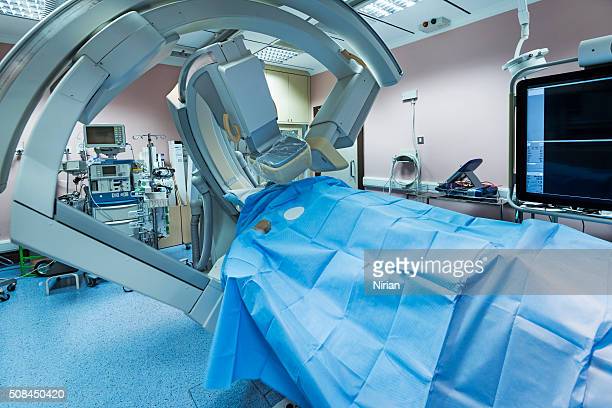In the medical world, angiograms are a vital tool used to diagnose a wide range of conditions. An angiogram is used to help doctors assess blockages in your arteries or veins. This procedure can be very helpful in detecting cardiac diseases such as coronary artery disease, as well as other problems including strokes and pulmonary embolisms. So when do patients need to undergo this important examination?
When Cardiac Problems Are Suspected
One of the primary reasons a patient may need an angiogram is if they are suffering from any kind of heart condition or symptoms that could indicate the presence of one. This includes chest pain, shortness of breath, and dizziness. These symptoms can be indicative of several different types of heart ailments, ranging from coronary artery disease (CAD) to aortic stenosis and arrhythmias.
An angiogram will be able to provide an accurate diagnosis by using contrast and imaging equipment to visualize the interior structures of your heart and related structures with extreme accuracy. From there, your doctor can determine what type of treatment plan you should pursue moving forward. Knowing exactly which type of problem you are dealing with is essential before anyone begins treating it effectively.
What Else Should I Know About Angiograms?
It’s important for patients considering an angiogram procedure to understand that there are some risks associated with undergoing the test — though it typically presents minimal risk overall, Patients considering an angiogram should understand there are potential small risks to any procedure, but the risk is often less than ignoring their symptoms of chest pain or shortness of breath.
Your doctor will discuss any potential side effects with you thoroughly before beginning any type of treatment plan so that you fully understand what all potential possibilities are involved with undergoing this procedure.
Overall, angiograms should only be considered necessary when other methods — such as CT scans — cannot accurately assess what’s happening within the body’s cardiovascular system, thereby preventing an accurate diagnosis from being made for appropriate treatment(s) to begin.
How is an Angiogram performed?
The angiogram procedure begins with the insertion of a thin tube, or catheter, into your blood vessel near your groin area. The physician will then inject a contrast which is used to identify any blockages in your arteries in greater detail.
At this point, the X-ray imaging equipment used can accurately detect any abnormalities that may be present. If a blockage is detected, further measurements can be taken to determine the severity of the problem and what type of treatment plan is best suited for you.
Depending on the type of condition you have, several different types of treatments could be recommended. For instance, if you’ve been diagnosed with coronary artery disease (CAD), doctors may suggest medications such as antiplatelet drugs or cholesterol-lowering statins in order to reduce the risk of heart attack or progression of the disease. In addition, procedures such as PCI (stents) or coronary artery bypass surgery may also be recommended.
In more severe cases where medications are not enough, bypass surgery may even be recommended to repair any existing damage and prevent future complications from arising.
Why You Should Get Regularly Scanned
For those with existing heart conditions or who are at high risk due to other medical issues such as diabetes or high blood pressure, it’s important to get regular check-ups and angiograms done to ensure any changes we don’t recognize ourselves can still be detected early on by professional scans.
This can help catch potential problems before they become too serious so that proper treatments can begin before things get out of hand — ultimately leading to better long-term health outcomes down the road.
What to Expect During an Angiography Procedure
When undergoing an angiogram, the patient will be asked to lie down on their back so that the x-ray image can be taken and any blockages detected as needed.
The procedure typically lasts anywhere from 30-60 minutes depending on the complexity of your condition. For most patients, only mild discomfort is experienced and medications or numbing agents may also be administered during the procedure to reduce any pain you feel.
Conclusion
To get a personalized cardiology consultation, book a telehealth appointment with Dr. Joan L. Thomas, MD. Get unlimited monthly virtual consultations, at your convenience.
BLOG AUTHOR
Dr. Ismail Sayeed
Dr. Sayeed is the Medical Director of ViOS, Inc. He is a deeply committed physician entrepreneur & medical blog writer. While building the global infrastructure of the VIOS Clinic, he is dedicated to educate people on the potential of specialist telemedicine for managing chronic diseases.
Read more about him in his author bio

